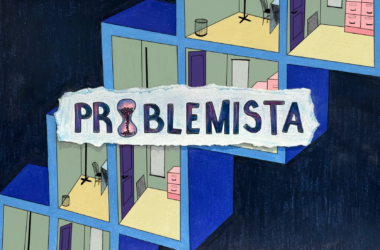With new streaming platforms appearing left and right, the battle for viewers’ attention has become increasingly diffuse. And with more and more content to sift through on a daily basis right from the comfort of one’s couch, the movie theatre’s centrality in the cultural zeitgeist has taken a major hit. It has become a major source of debate: As movies assimilate further into the household, studios will cater their projects to that kind of viewing experience.
Filmmakers around the world are wondering what this shift might mean for their work and whether there will be sufficient opportunities to make movies for the big-screen as well as streaming sites like Netflix. Additionally, film purists worry that streaming giants will completely overtake the entertainment industry, resenting the move away from tradition.
Alfonso Cuarón’s Roma falls squarely into this debate. The film tells the story of Cleo, a housekeeper working in Mexico City, and her relationship to her wealthy employers. Set in the 1970s, the film’s gorgeous black-and-white cinematography portrays a time vividly inspired by Cuarón’s own memories. Filmed in a large 65mm format, Cuarón creates an immersive experience for the viewer. Only a master like Cuarón could draw as much beauty from shots of water going down a sewer as they could from wide Mexican landscapes. Critics and fans alike have said this affect requires the big screen: It necessitates the clearest projection systems and best speakers. But here’s the catch: In April, Netflix purchased Roma’s distribution and the film is set to be released on Dec. 14. For many, this wonder of sight and sound will be relegated to their laptops. As the old adage goes, cinema is dead.
Netflix offers eight billion dollars worth of content for its 137 million subscribers worldwide, which makes it a massive stage for curated productions. Meanwhile, the average movie ticket price in North America is $9.27 and well over $10 in major cities. Netflix’s standard plan is $7.99/month. Once you add transportation, snacks, or the added cost of a 3-D or IMAX screening, going to the movies has become an unsustainable expense. And with prices only increasing, more consumers are turning toward streaming platforms. Cinephiles see the service as a blight, which is perhaps more indicative of the elitism of the industry and film nerds than anything else. Given the sheer number of people who have access to their work, in addition to Netflix’s relative creative control for filmmakers, it makes sense that independent directors like Joe Swanberg, and international auteurs like Cuarón and Bong Joon-ho, are flocking to the platform for distribution.
Industry giants have long contested this transition: Steven Spielberg doesn’t believe that Netflix movies are real movies, and Quentin Tarantino hates streaming. But, streaming is the new reality of the entertainment industry, and Cuarón, who, admittedly, was granted a major theatrical release, still concedes to it.
“We’re going to live with this format,” Cuarón said in a press conference. “It’s important the two things exist not clash. It’s just a question of finding something that works.”
Fortunately, it appears that Netflix and theatre companies are approaching some sort of synthesis: Roma will be released in select theatres on Nov. 21 before expanding nationwide up until its Netflix premiere. The Coen brothers are employing a similar model for their new film, The Ballad of Buster Scruggs, as is David Mackenzie with Outlaw King, which hopefully predicts a new symbiotic relationship between movie theatres and Netflix.
With the successes of films such as Noah Baumbach’s The Meyerowitz Stories and Bong-Joon Ho’s Okja, Netflix has shown it can nurture prestige films of any scale. Additionally, other recent films like Beasts of No Nation and Mudbound have solidified Netflix’s place as a perennial Oscar contender. With Netflix churning out quality films, it’s ideal that they are trying to get them onto the big screen in addition to their platform. This will allow viewers to watch movies how they want; they can seek out the theatre experience or stay at home. Having the choice is optimal. To deny that is to perpetuate the tradition of dividing art between the binary of ‘real’ and ‘populist,’ as if Netflix’s accessibility inherently worsens the film.
I was fortunate to catch Roma at the Toronto International Film Festival and can vouch for the impact of seeing it in theatres. However, not everybody shares the same priorities when it comes to watching movies. Roma is a cinematic masterpiece, but it’s also a personal, poignant tale of how to find meaning and fulfillment despite life’s adversities. There is no need for a big screen to convey that message.









